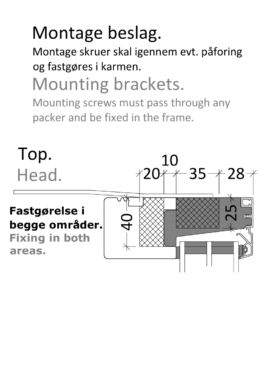All wood profiles from Idealcombi are quality optimised and finger jointed/ laminated ensuring elimination of at least 95% of all knots, star shakes and other defects. This gives the wood profiles greater stability and significantly reduces problems such as knot discoloration, yellow blotches and resin lumps in the surface treatment.
Please bear in mind that wood is a natural material and as such resin lumps may form underneath the paint and discoloration from the wood treatment may occur – even with the best surface treatment.
Small droplets of resin penetrating the paint can easily be removed with rubbing alcohol.
If small lumps of resin form underneath the paint, leave them for 2-3 years or until the resin has penetrated the surface treatment, then remove them with rubbing alcohol or, in more serious cases, scrape and sandpaper them away before applying new paint.
Yellow discoloration, which can normally be removed with rubbing alcohol, often occurs on light colour finishes.
The above mentioned problems are often more pronounced during hot summers (tropic climates) and may occur rapidly particularly on facades facing south.
For further information please see Danish Window Certification appendix 14, page 28 of the technical regulations which deal with “Expected outcome of industrially surface treated timber elements”.





































